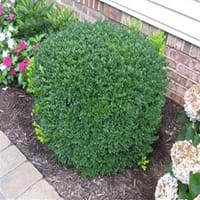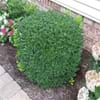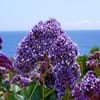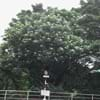Life Span
Perennial
Perennial
Type
Broadleaf Evergreen
Fruit
Origin
Hybrid origin
China
Types
Not available
Actinidia deliciosa chlorocarpa, Actinidia deliciosa deliciosa
Number of Varieties
Not Available
Habitat
Anthropogenic, meadows, Slopes
Mountain forests
USDA Hardiness Zone
6-9
6-9
AHS Heat Zone
Not Available
9-7
Sunset Zone
21,22
4, 5, 6, 7, 8, 9, 12, 14, 15, 16, 17, 18, 19, 20, 21, 22, 23, 24
Habit
Oval or Rounded
Vining/Climbing
Minimum Width
Not Available
Flower Color
Green, Light Yellow
Light Yellow, Ivory
Flower Color Modifier
Bicolor
Bicolor
Fruit Color
Not Available
Tan, Brown
Leaf Color in Spring
Green, Dark Green
Green, Light Green
Leaf Color in Summer
Dark Green
Green
Leaf Color in Fall
Dark Green
Light Green, Yellow green
Leaf Color in Winter
Dark Green, Bronze
Light Green
Leaf Shape
Oblong elliptic
Heart-shaped
Plant Season
Spring, Summer, Fall, Winter
Spring, Summer, Fall
Sunlight
Full Sun, Partial Sun, Partial shade
Full Sun, Partial Sun
Type of Soil
Loam, Sand
Clay, Loam
The pH of Soil
Acidic, Neutral
Acidic, Neutral
Soil Drainage
Well drained
Average
Bloom Time
Spring
Late Spring, Early Summer
Tolerances
Pollution
Drought
Where to Plant?
Container, Ground, Pot
Ground
How to Plant?
Seedlings
Layering, Softwood cuttings
Plant Maintenance
Medium
Medium
Watering Requirements
Keep ground moist, Keep immersed in water, Medium
Water daily during growing season
In Summer
Lots of watering
Lots of watering
In Spring
Moderate
Moderate
In Winter
Average Water
Average Water
Soil pH
Acidic, Neutral
Acidic, Neutral
Soil Type
Loam, Sand
Clay, Loam
Soil Drainage Capacity
Well drained
Average
Sun Exposure
Full Sun, Partial Sun, Partial shade
Full Sun, Partial Sun
Pruning
Remove damaged leaves, Remove dead branches, Remove dead leaves
Prune for shortening long shoots, Prune in early summer, Prune in late winter
Fertilizers
10-10-10
Self-fertile
Pests and Diseases
Blight, Leaf spot, Leafminer, Mites, Psyllids
Armillaria root rot, Armored scales, Bleeding canker, Botrytis Blight, Crown gall, Nematodes, Phytophthora Root Rot, Red blotch
Plant Tolerance
Pollution
Drought
Flowers
Insignificant
Showy
Flower Petal Number
Not Available
Single
Foliage Texture
Fine
Medium
Foliage Sheen
Glossy
Matte
Attracts
Flying insects, Insects
Not Available
Allergy
Itchiness, Skin irritation
Inflammation, Mouth itching, Throat itching
Aesthetic Uses
Bonsai, Decorating walls, Landscape Designing, Mass in beds, Mixed Border, Showy Purposes, Used for decorating walls, fences, gates, hedges, etc., Used for making hedges
Not Used For Aesthetic Purpose
Beauty Benefits
Not Available
Beautiful Skin, Protects from sun damage
Environmental Uses
Air purification, Food for animals, Food for birds
Air purification
Medicinal Uses
Not Available
constipation, Heart problems, Low Blood Pressure
Part of Plant Used
Not Available
Fruits
Other Uses
Used as Ornamental plant, Used for Landscaping
Used As Food, Used for its medicinal properties
Used As Indoor Plant
No
No
Used As Outdoor Plant
Yes
Yes
Garden Design
Container, Edging, Foundation, Hedges, Rock Garden, Wall
Edible, Fruit / Fruit Tree, Rock Garden / Wall, Vine
Botanical Name
BUXUS 'Green Velvet' COPF
ACTINIDIA deliciosa
Common Name
Green velvet boxwood
Chinese Gooseberry, Fuzzy Kiwi, Kiwi
In Hindi
Green velvet boxwood
कीवी फल
In German
Grüner Samt boxwood
Kiwi, Chinesischer Strahlengriffel
In French
Vert velours buis
Kiwi, Groseille de Chine, Yang Tao, Souris végétale
In Spanish
boj terciopelo verde
kiwi, kivi, actinidia
In Greek
Πράσινο πυξάρι βελούδο
Ακτινίδια
In Portuguese
buxo veludo verde
Quiuí
In Polish
Green Velvet bukszpan
Owoc kiwi
In Latin
Carl viridis praetoriola
Kiwi fructum
Phylum
Tracheophyta
Magnoliophyta
Class
Magnoliopsida
Magnoliopsida
Family
Buxaceae
Actinidiaceae
Clade
Angiosperms, Eudicots
Angiosperms, Asterids, Eudicots
Tribe
Not Available
Not Available
Subfamily
Not Available
Not Available
Season and Care of Green Velvet Boxwood and Kiwifruit
Season and care of Green Velvet Boxwood and Kiwifruit is important to know. While considering everything about Green Velvet Boxwood and Kiwifruit Care, growing season is an essential factor. Green Velvet Boxwood season is Spring, Summer, Fall and Winter and Kiwifruit season is Spring, Summer, Fall and Winter. The type of soil for Green Velvet Boxwood is Loam, Sand and for Kiwifruit is Clay, Loam while the PH of soil for Green Velvet Boxwood is Acidic, Neutral and for Kiwifruit is Acidic, Neutral.
Green Velvet Boxwood and Kiwifruit Physical Information
Green Velvet Boxwood and Kiwifruit physical information is very important for comparison. Green Velvet Boxwood height is 60.00 cm and width 60.00 cm whereas Kiwifruit height is 610.00 cm and width Not Available. The color specification of Green Velvet Boxwood and Kiwifruit are as follows:
Green Velvet Boxwood flower color: Green and Light Yellow
Green Velvet Boxwood leaf color: Green and Dark Green
Kiwifruit flower color: Light Yellow and Ivory
- Kiwifruit leaf color: Green and Light Green
Care of Green Velvet Boxwood and Kiwifruit
Care of Green Velvet Boxwood and Kiwifruit include pruning, fertilizers, watering etc. Green Velvet Boxwood pruning is done Remove damaged leaves, Remove dead branches and Remove dead leaves and Kiwifruit pruning is done Prune for shortening long shoots, Prune in early summer and Prune in late winter. In summer Green Velvet Boxwood needs Lots of watering and in winter, it needs Average Water. Whereas, in summer Kiwifruit needs Lots of watering and in winter, it needs Average Water.





